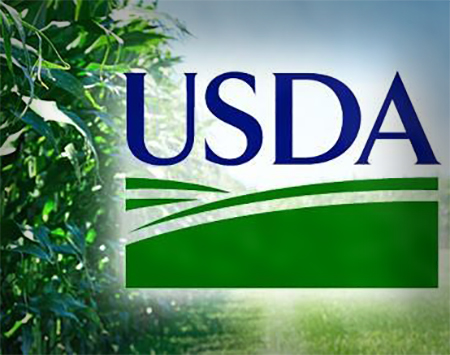
(Agriculture.com) – The U.S. Department of Agriculture is set to revise its U.S. soybean forecasts next month after leaving area and yield projections unchanged in a monthly report issued on Tuesday, USDA chief economist Robert Johansson said.
USDA’s monthly World Agricultural Supply and Demand Estimates (WASDE) report cut corn area and yields following severe delays to plantings this season.
“I think conventional wisdom is that some of the corn acres would translate into bean acres and that translates into lower soybean prices,” Johansson said on the sidelines of a reception organised by the International Grains Council.
The U.S. soybean area was kept at 84.6 million acres and yield at 49.5 bushels an acre.
“I think we didn’t have information to go on right now to change those soybean numbers. I think we will see adjustments being made to the soybean crop in the July WASDE,” he said, adding it was a later planted crop than corn.
USDA on Tuesday raised its forecast for the average soybean farm price to $8.25 a bushel from $8.10.
The U.S. corn area was cut to 89.8 million acres from a previous forecast of 92.8 million, while the corn yield was downwardly revised to 166 bushels per acre from 176 bushels.
Johansson noted that the planting and emergence of the corn crop had been delayed.
“That is going to push the main grain filling period for corn into the hottest part of the summer,” he said, adding that typically could affect overall yield.
Johansson said an expected reduction in soybean demand from China linked to an outbreak of African swine fever in the world’s biggest hog herd was now “built into the market”.
Soybean meal is a major feed ingredient for hogs.
He noted that Rabobank had forecast China’s pork output would fall by 30 percent, which would dampen soybean prices. [nL3N21T33L}
Soybean crush numbers in China have, however, so far remained relatively constant, he added.
“We haven’t seen the crush numbers down as much in China as you might expect (if pork production was falling so sharply),” Johansson said, adding that might partly reflect increased demand from the poultry sector as Chinese consumers eat more chicken.
Johansson said there was “no question” the United States would like to have a trade agreement with Britain if the UK leaves the European Union.
He said there could be challenges similar to those faced in negotiations between Washington and the European Union to try to agree a Transatlantic Trade and Investment Partnership.
Differing views on food safety proved a stumbling block in those negotiations.
“There are some pretty hard decisions there,” he said, while adding he had faith in the ability of negotiators to bridge the gap. (Reporting by Nigel Hunt; Editing by Dale Hudson)




